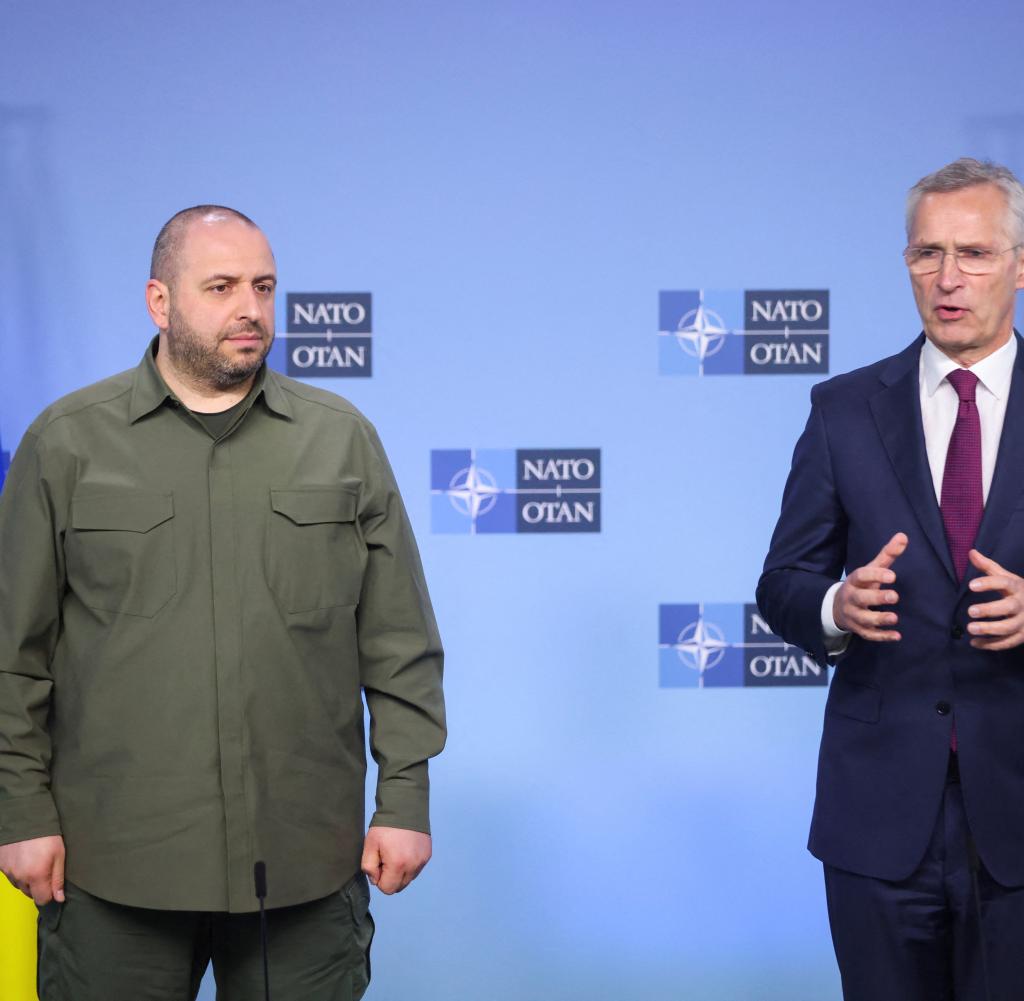The NATO states have adopted a so-called operational plan for expanding support for Ukraine. The alliance project is primarily about NATO taking over the international coordination of arms deliveries and training activities for the Ukrainian armed forces in the future.
The document was adopted on Thursday on the sidelines of a defense ministers’ meeting in a written procedure, the German Press Agency learned from diplomats. The agreement is to be made public this Friday after formal approval by the ministers.
The support tasks have so far been carried out primarily by the United States. At the end of 2022, the United States set up a unit of around 300 soldiers called Security Assistance Group-Ukraine (SAG-U) at the European headquarters of the US armed forces in Wiesbaden, Hesse. The NATO mission is now expected to have at least the same number of personnel. Details of the operational plan were initially kept secret by the alliance.
The NATO project is also seen as a precaution in the event of a possible return of Donald Trump to the US presidency in January 2025. Statements by the Republican in the past had raised doubts as to whether the USA would continue to support Ukraine under his leadership in the defensive war against Russia as it has done so far. The alliance fears that a political change of course in Washington could also affect the coordination of arms deliveries and training activities for the Ukrainian armed forces.
NATO Secretary General Jens Stoltenberg said in Brussels on Thursday that the aim now is to create a more robust platform for support to Ukraine in order to ensure a long-term engagement.
Hungary will not be participating in the new NATO project. The government of Prime Minister Viktor Orban fears that the project could push the alliance into direct confrontation with Russia. This is why two years ago many other NATO states were very cautious and prevented greater NATO support. Over time, however, this assessment has changed and most NATO states consider the risk to be calculable.
To ensure that Hungary does not prevent the necessary consensus for the project, the country was assured that it would not have to contribute any financial or personnel costs.
The new project is currently referred to within the alliance as “NATO Security Assistance and Training for Ukraine” (NSATU). Most NATO states had previously actually spoken in favor of the name “NATO Mission Ukraine”. However, the German government took the view that this could be mistakenly understood to mean that the alliance wanted to send soldiers to Ukraine. It therefore feared that the name could be used by Russia for propaganda against the alliance.
Further preparations for the project can now be made on the basis of the agreed operational plan. Ideally, it should be officially launched in July, when Chancellor Olaf Scholz (SPD) and the other 31 heads of state and government of the NATO countries come together for a summit in Washington.




